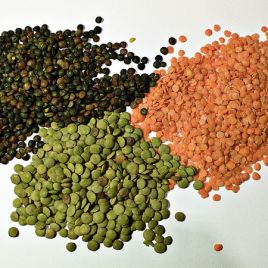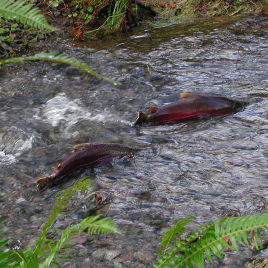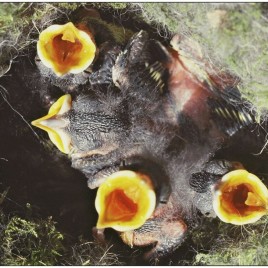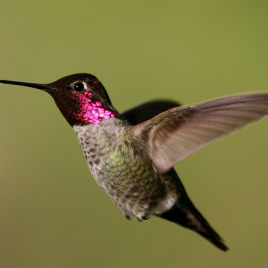Further evidence is linking the Zika virus to fetal brain damage and now to serious neurological disease in adults. In the first paper researchers performed brain scans on 23 babies born to mothers thought to be infected with Zika. The scans revealed a majority of the babies had severe brain malformation and scar-like lesions […]
Restoring movement to a quadriplegic patient
Researchers have successfully restored some movement to the fingers, hand, and wrist of a quadriplegic patient by using recorded signals from his motor cortex, allowing him to perform daily living activities such as pouring from a bottle and stirring the contents. Systems that work by translating neural activity into signals for robotic devices, such as […]

Solving quantum physics problems with computer games
Computer gamers can teach quantum physicists a thing or two! At least according to the results of a study using an online game platform called Quantum Moves, which presents problems in quantum physics as games. So far the games have been played 500,000 times by about 10,000 different players. The research confirmed that using the […]
Successfully creating insulin-producing beta cells in the lab
Researchers have created insulin-producing cells in a petri dish for the first time, moving closer to finding a potential cure for diabetes. The researchers discovered a switch that makes it “possible to produce a functional human beta cell that’s responding almost as well as the natural thing,” according to Ronald Evans, senior author and a […]
This is pretty crabby
Thousands of red crabs swarming in low-oxygen waters off the coast of Panama have been captured on video during a recent diving expedition. The crabs were identified by DNA as Pleuroncodes planipes, or Tuna Crabs, which have never been seen in waters so far south. The lead author, Jesús Pineda, said “when we dove down […]
STIs promote monogamy, but only in certain instances
Sexually transmitted infections (STIs) may have helped foster monogamy in some human societies, according to a new study. Researchers found that when a society is large the prevalence of STIs becomes endemic, reducing fertility rates and favouring the emergence of monogamists in society. However in smaller groups, with a maximum of 30 people, STI outbreaks […]
People with disease-causing mutations who remain mysteriously healthy
Researchers have identified 13 people who appear to be healthy, despite carrying genetic mutations associated with severe childhood disease. Researchers identified these individuals after performing genomic analysis on more than half a million people. The team believes their study provides a first step toward pinpointing genetic variants that may protect against childhood diseases currently thought to […]
Prenatal sex selection?
Indian-born women who already have two daughters are significantly more likely to have a son after moving to Canada, which the researchers and the author of an accompanying commentary believe shows “prenatal sex selection is likely present among first-generation immigrants to Canada from India and provide strong evidence that suggests induced abortions are being used […]
Call to use more fiber in fiber research studies
Eating more fiber may help restore diversity in our gut microbes, according to researchers at the University of Alberta. In a commentary the researchers advocate for strategically increasing dietary fiber intake to close the “fiber gap” most Westerners have in their diet. They pointed to evidence showing a more diverse microbial population benefits not only […]

Celebrate the International Year of the Pulse every day and who know’s what you’ll lose
Eating just one serving of beans, peas, chickpeas, or lentils a day could help contribute to a modest weight loss, according to a meta-analysis of clinical trials. Researchers founding eating 130 grams (or ¾ of a cup) of the food group known as pulses each day led to just over half a pound of […]

Salmon like the dark side
Salmon living in tanks with darker backgrounds are typically less aggressive than those living in a lighter coloured environment, according to new research. The researchers divided 100 Coho Salmon into 10 different tanks, each with different colour patterns, and monitored their behaviour. They found that the salmon prefered the darker areas, and were less aggressive […]

Revising the age of the Hobbit
A new paper suggests that “hobbits” or Homo floresiensis (nicknamed the hobbit for its physical stature) lived longer ago than previously thought, and that they may not have encountered modern humans. Researchers used new chronological and stratigraphic information from the Liang Bua cave in Indonesia to make this claim. Previous dates suggested floresiensis used the […]

Which chick to feed? How birds choose
Which chick gets fed first in a brood seems to depend more on the environment than a chick’s begging or its size. That’s what researchers report after reviewing data on 143 different bird species. When food is plentiful and supplies are stable, birds will usually feed the chicks who beg the most and are […]

How the hummingbird turns
Hummingbirds control their turning velocity and radius using body orientation and asymmetrical wingbeats, according to a new study. Using a feeder tracking experiment researchers found the birds control their turning velocity by altering their physical orientation, and control their turning radius by beating their wings at slightly different speeds. Researchers filmed six adult male […]
Learning from the naked mole rat
When most mammals, including humans, are in a low-oxygen environment they begin to hyperventilate to increase their oxygen uptake. However this is an energetically costly way to increase oxygen levels in the body. The naked mole rat is unique from other mammals; when it is exposed to hypoxia (low oxygen levels) it does not begin […]

Use ’em or lose ’em – The case for teaching navigational skills
Schools should teach navigational and map reading skills to ensure future generations do not lose their innate ability to navigate in the world, so says Roger McKinlay, former president of the Royal Institute of Navigation in the United Kingdom. In this commentary, the author argues that turning to technology erodes our innate ability to orientate, […]